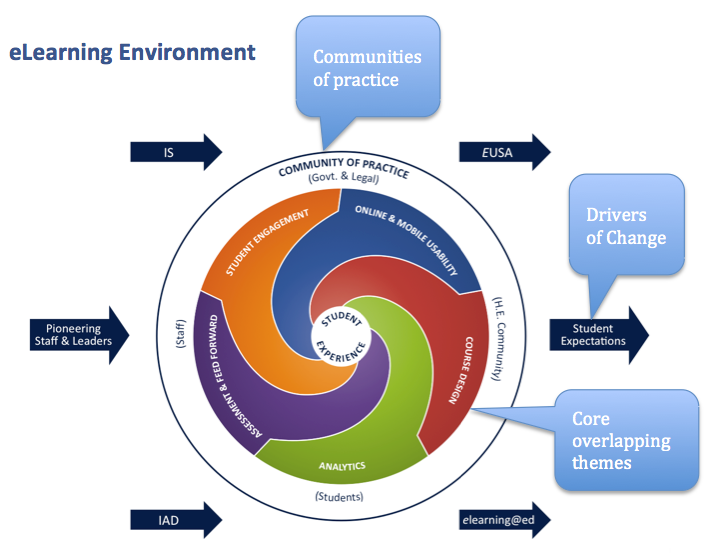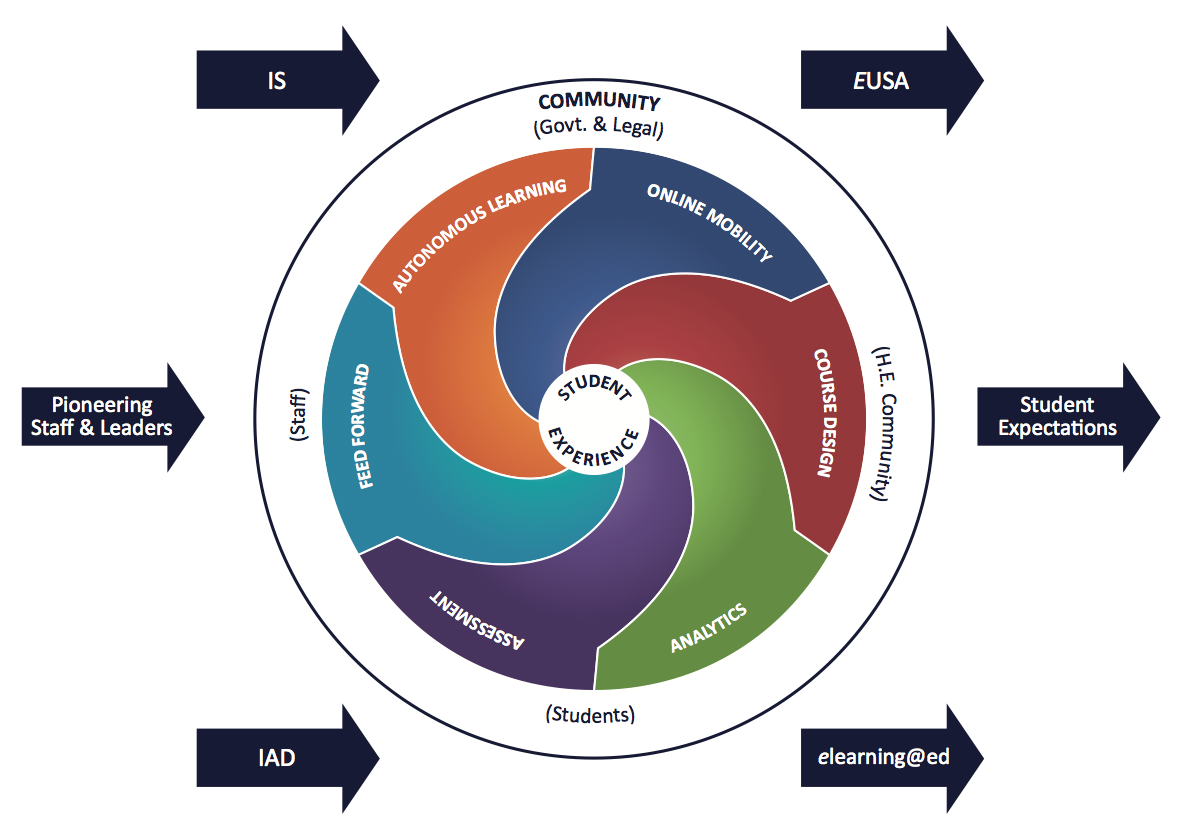Developing a Strategic Recipe
Since being appointed as Head of the Learning Services team in June 2012, I’ve been working to develop strategic direction for IS learning technology provision to the University in collaboration with other IS colleagues working in this domain.
Between summer and December 2012, I had been reading as much research and strategic literature as I could (young family permitting), and had put a good amount of effort into re-establishing inter team relations and communication. This effort was very useful in enabling opportunities to refine my thinking and consult with colleagues.
The months of December 2012 and January 2013, entailed delivering a number of what seemed to me to be important presentations, to new academic staff, and to the University Court. I was given enough freedom to provide my own perspective of learning technologies at the University of Edinburgh. On reflection these opportunities to consider what had gone before, and to ponder current good practice, research and options, provided a timely and useful series of focal points.
I had already started to structure my notes under a set of theme headings, which for personal organization I was finding useful these are:
- Student Engagement
- Online & Mobile Usability
- Course Design
- Analytics
- Assessment & Feed Forward
These themes seemed to me, to constitute the main flavours and ingredients to provide the basis for further discussion in order to articulate a very University of Edinburgh specific strategic mixture. It stuck me though that unsurprisingly in an organization of this size, there are many groups and individuals that need to be involved and collaborate in the preparation of this strategic recipe, and that to make progress, I would need to work through our various learning and teaching oriented committees.
http://www.ed.ac.uk/schools-departments/academic-services/committees/learning-teaching
http://www.ltag.is.ed.ac.uk/remit.cfm
The following diagram shows my initial attempt to illustrate the blend and dynamic momentum of the learning technology domain, in which strategic collaboration would be required. The diagram was conceived as a mechanism for establishing a dialogue about where priorities and effort should be placed.
After discussing the diagram with close colleagues I soon realised that the categories would need to be defined and the concepts unpacked further. My theme titles were intended as very broad descriptors, however discussion has since indicated the need to split up mobile and online, and assessment and feedback for our particular purposes, as the tools we offer have often quite different characteristics across these broad themes. Non-the less, the model has proven useful as an aid to discussion, understanding and has led to an early draft of an IS learning technology strategic plan
I’d like to refine the diagram to indicate a blurring across theme boundaries, and over time to illustrate that the needs of the institution will change, necessitating the themes to be fluid in nature and varying in significance over time. The most recent model is shown below.
Next steps involve talking to a wider set of colleagues about their perception of, how our tools and services contribute to these themes, and specifically where priorities for enhancement need to be focused. Readers of this post are invited to add comments, suggesting how collaborative strategic discussion might be best taken forward. My intention is that the ongoing dialogue with colleagues will use existing structures and Governance groups to develop an emerging SCOT (Strengths, Challenges, Opportunities, Threats) analysis, and to embark upon collaborative horizon scanning. More to follow.






